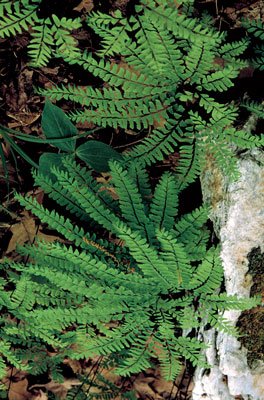I hope you enjoyed the end of the year
It is also a happy year for you and for all the family
We hope to get some support from you brother at the beginning of the yearHi brother @gavvet
Northern maidenhair’s delicate, 8-20 in. fronds, with dark, shiny stems, spread their pinnae horizontally in a nearly perfect circle. This graceful, fan-like pattern is unique among native ferns. The fronds arise from a creeping rootstock in clusters. Burgundy red fiddleheads appear in early spring. The roots are wiry and black, colonizing in favorable sites.
This fern is quite easy to grow if it is provided with the right conditions. Western plants are sometimes treated as a separate variety or subspecies, A. pedatum var. or ssp. aleuticum, but eastern and western plants look very much alike.
Native Americans and others used this handsome foliage plant to treat a wide variety of ills, but maidenhair fern intrigues gardeners primarily because of its unusual architecture, which is stunning in a woodland garden setting.
The genus Adiantum comprises more than 200 species of deciduous, semievergreen, or evergreen ferns native to tropical America, to north temperate areas in both hemispheres, and to Australia. Maidenhair fern (A. pedatum) grows in rich, moist woods in Japan, the Pacific Northwest, and much of eastern North America.
-Advertisement-
Maidenhair ferns grow in a way that is utterly different from that of any other herb you may have in your garden. Each spring, clusters of tightly coiled maidenhair fiddleheads (also called crosiers) arise from creeping underground stems (rhizomes) growing just below the soil surface. Gradually, the glossy black stems (stipes) uncoil to reveal wiry, spreading branches (rachises) that bear five to seven groups of leaf segments. These segments (pinnae) are in turn divided into alternate, heavily veined pinnules. The pinnae are held nearly parallel to the ground in an open ring.
The generic name, Adiantum, Greek for “unwetted,” refers to the fronds’ water repellency. The specific name, pedatum, is Latin for “like a (bird’s) foot” and refers to the splayed pinnae. The common name, maidenhair fern, appears to be an inexact translation of capillus-veneris, (literally, “Venus’s hair”), the epithet of a different species found in subtropical regions of both the Old and New